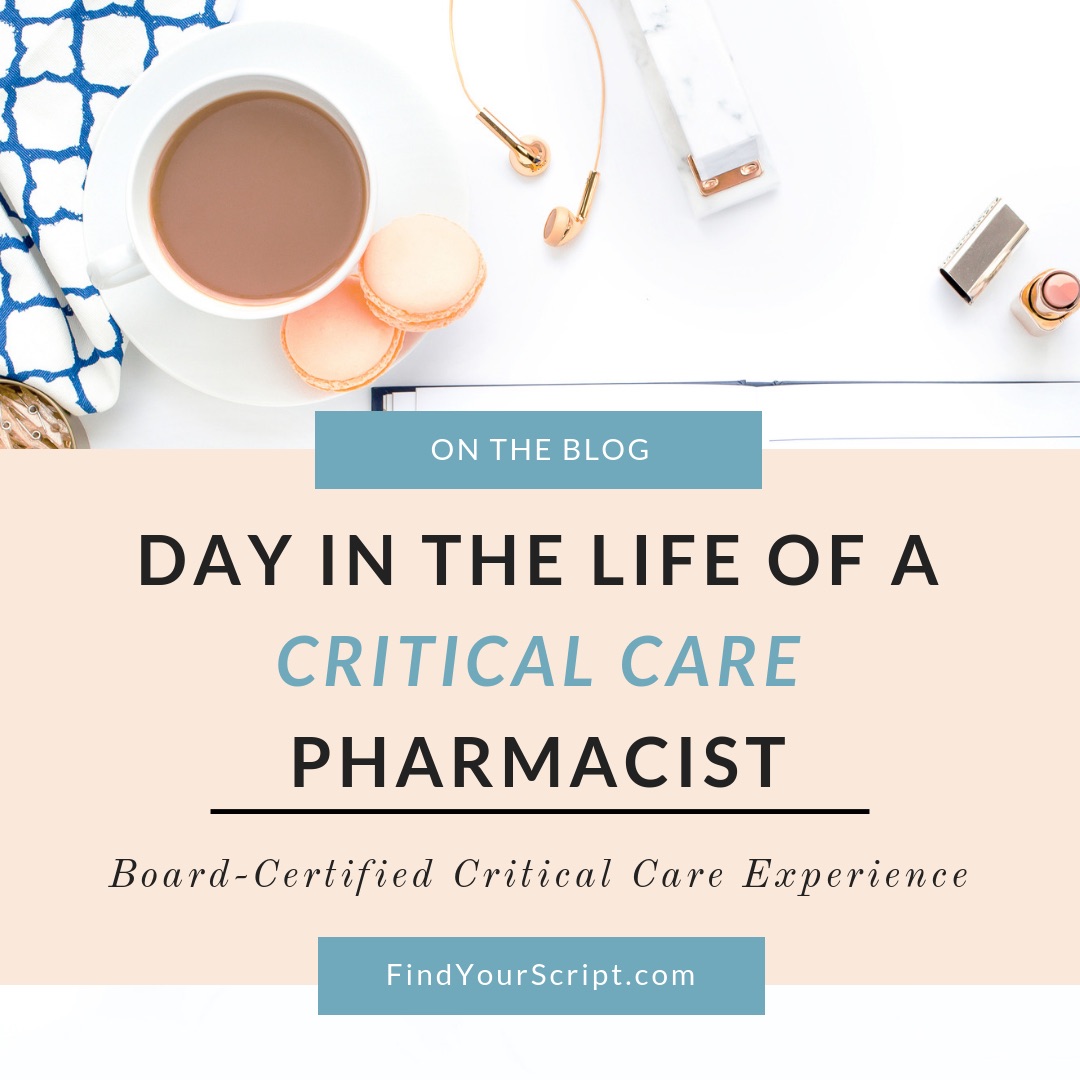
Day in the Life of a Critical Care Pharmacist
Watch & Subscribe on YouTube Channel!
Wonder what it is like to be a critical care pharmacist? I’m a board-certified critical care pharmacist and unlike many believe, I do not dispense medications all day.
Here is what a “typical” day is like as a critical care pharmacist – from my experience at University of Utah Health – the center I completed my 2-year residency training at. Of course, no day is the same nor considered “typical” but an overview of what is is like to work as a pharmacist in this setting.
There are many different ICU settings – I have experience in the Surgical, Cardiovascular, Medical, Neuro and Burn ICUs at University of Utah Health. In addition, I completed pediatric experiences in the NICU and PICU (at Intermountain Children’s) along with Emergency Department experiences in the level-1 trauma ED. The ED is a completely different schedule so it is not addressed here.
My Day as a Critical Care Pharmacist…
5:30-6:00 am
- Arrive at the hospital and prepare work in the Intensive Care Unit Pharmacist Office.
- Login electronic health records system (Cerner or EPIC from personal experience)
- Start big-picture with overview of how the ICU feels and looks, walk around the ICU and see how team members and professionals are doing, stop by a few patient rooms especially newly admitted patients to see what is physically going on with IV pumps, physical appearance, etc.
6:00 – 7:30 am
- Start detail work – work-up for each ICU patient
- Existing patients familiar with: orders from overnight, changes in last 12-24 hours
- New patients: full work-up to understand why they were admitted, preliminary medication reconciliation, progress note and interventions
- Format for gathering information is either head-to-toe (Review of Systems) or Problem List
7:30 – 8:00 am
- Teaching time – discuss patients with pharmacy students or pharmacist residents before ICU rounds begin
8:00 – noon
- ICU inter-professional rounds
- Format and duration vary between unit and attending leading the teams
- Walk room to room or Sit-down rounds in conference room
- Attending may be critical care intensivist, anesthesiologist critical care, pulmonary critical care or surgeon lead
- Each member of the team has a turn to speak about each patient – usually the medical resident presenting the patient, nurse going over bedside information and rest of team having input – from pharmacist, dietician, social worker, respiratory therapist, PT/OT.
Noon – 12:30 pm
- Lunch and break
12:30 – 2:00 pm
- Check emails and new orders for patients (both medication and non-medication orders)
- Finish medication reconciliation, preventative care evaluations (for immunizations), pain management evaluations and patient education 1-on-1 in patient rooms
- Write progress notes for patient chart
- Write pass-off notes for Pharmacist-only view in EPIC
2:00 – 3:00 pm
- Teaching time with pharmacy students and residents
- Walk the unit, talk with nurses, medical residents, attendings to ensure all questions are followed up and patients are doing well
3:00 – 3:30 pm
- Verbal pass-off to swing shift pharmacist (2:00 – 10:00 or 3:00 – 11:00 pm shift)
Watch & Subscribe on YouTube Channel!
You may also Enjoy Reading:
- 5 Ways to Improve Study Habits
- 5 Tips for Staying Focused while Studying
- How to Use Medication Charts to Study Drugs

